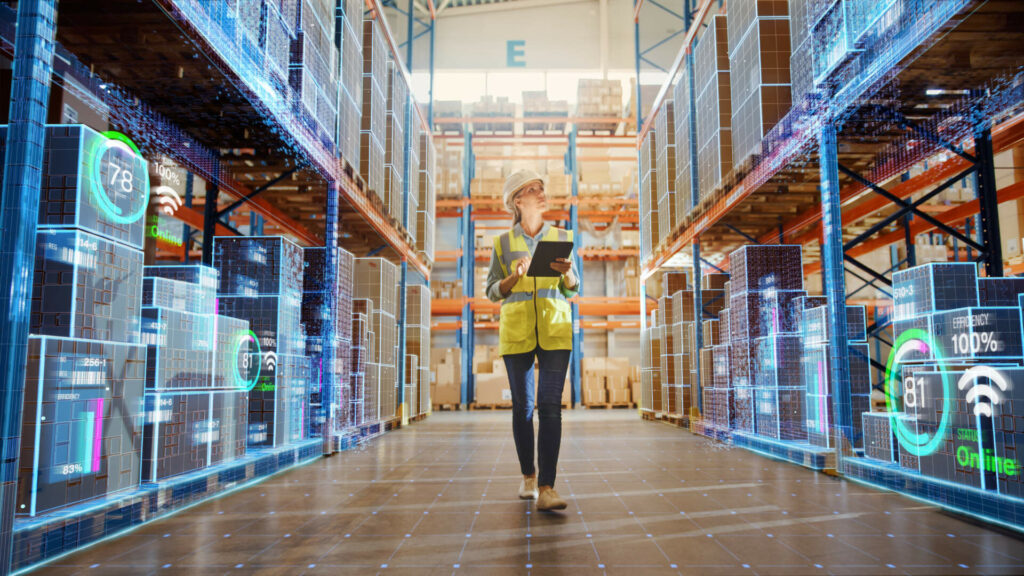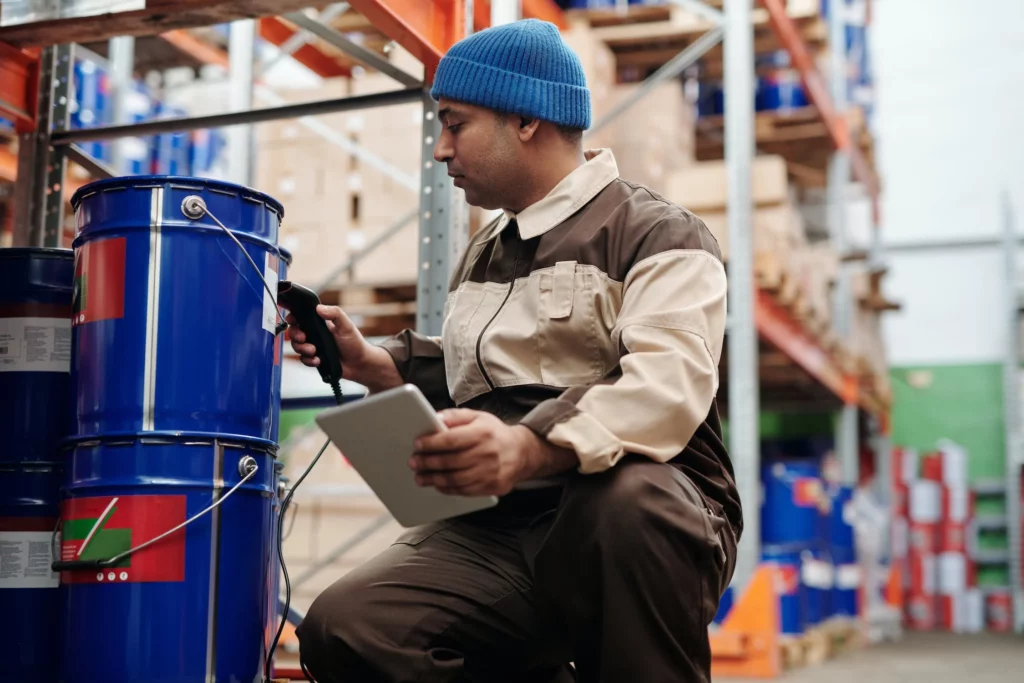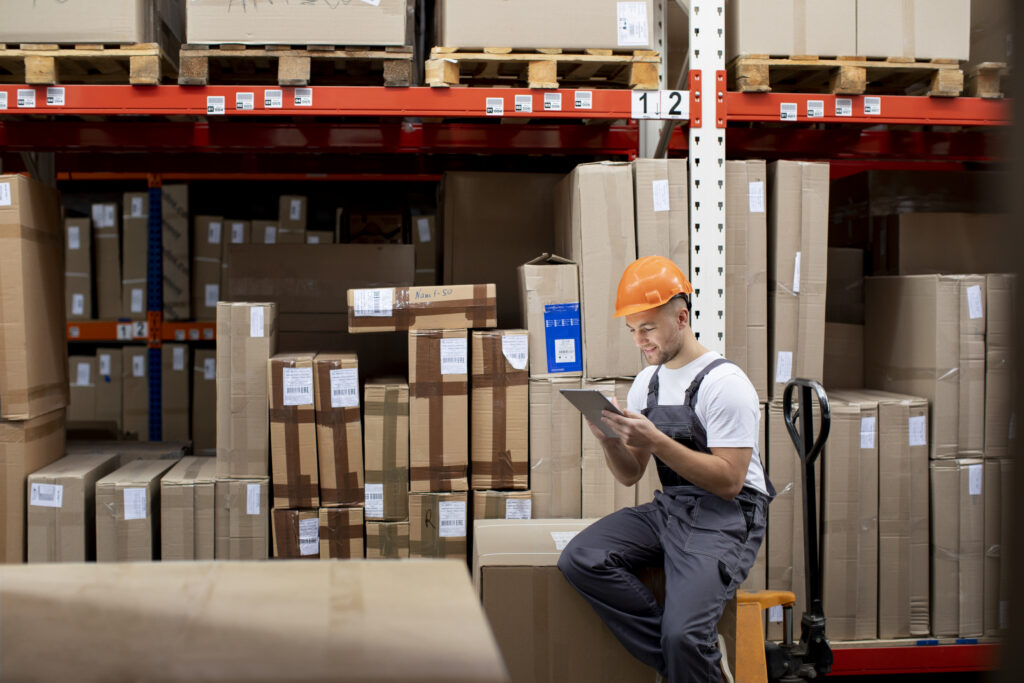

Practical Applications
In today’s fast-paced logistics landscape, the quest for operational agility and efficiency is paramount. Private 5G stands out as a key new technology in this pursuit, offering more than just robust connectivity; it serves as a solution to the pressing challenges faced by logistics centers.
INTRODUCTION
We recommend you to read the amazing Zebra Vision study – Warehousing Vision Study “Dynamic Markets Demand Warehouse Agility” in which we learn:

Rapid Modernization in Warehousing Operations
The logistics and warehouse sector is undergoing a profound transformation, with decision-makers demonstrating a palpable urgency towards modernization. A staggering 96% are either already accelerating the timelines of their overhaul projects or have plans to undertake such measures within the imminent year. This indicates a pronounced shift in strategy and operations, reflecting the perceived necessity to adapt and innovate in an ever-evolving industry landscape.
The Integration of Autonomous Technology
But what’s driving this urgency? One significant factor is the evident benefits of incorporating autonomous mobile robots (AMRs) in warehouse operations. As many as 83% of associates attribute their enhanced productivity to these autonomous entities. These robots, capable of streamlining processes and minimizing manual tasks, symbolize the very essence of technological advancement in the sector. Their influence is so potent that a vast majority of workers now view them not just as tools but as pivotal elements enhancing their work efficiency.
A Phased Approach to Automation
Intriguingly, while the adoption of full-fledged automation is on the horizon, both decision-makers and associates exhibit a harmonized viewpoint on the method of transition. 83% of decision-makers and 89% of associates concur that the ideal approach to introducing automation is to first augment labor with supportive software and devices.
So what about P5G
This phased approach allows for smoother integration, laying the groundwork for the next wave of innovation, such as the incorporation of private 5G networks.
As warehouses strive for more excellent connectivity and real-time data processing, private 5G is set to become the linchpin, ensuring seamless communication between machines and enhanced operational efficiency.
Its broad applications range from ensuring safety at the workplace with wearable devices to redefining order fulfillment speeds. For logistics centers, embracing private 5G isn’t just about addressing present hurdles; it’s about charting a course for a future characterized by unparalleled growth and innovation.
PRACTICAL USE CASES

We interviewed 10 users and identified a few of the efficient use cases behind the adoption of private 5G in wholesale operations:
Problem: Transitioning field teams from traditional manual methods to digital processes, particularly when integrating Warehouse Management Systems (WMS), presents a challenge. The hesitation often stems from concerns over unreliable connectivity, which can be a significant source of frustration. If the network fails or falters, it doesn’t only disrupt the workflow; it can dramatically decelerate the entire operational process, leading to inefficiencies and delays.
Action: The strategic solution is to introduce a 5G-enabled WMS system. Such a platform leverages the ultra-fast and consistent connectivity of 5G to deliver real-time tracking and updates on goods as they move through the supply chain. To complement this, it’s crucial to furnish field teams with handheld devices optimized for 5G. These gadgets ensure continuous data entry and retrieval, providing teams with the assurance of a system that works in harmony with their tasks, enhancing productivity and reducing the potential for errors.
Problem: One of the major challenges businesses face, especially those dealing with high-value items, is maintaining a crystal-clear view of their inventory. It’s no small matter; inaccuracies in stock counts or misplaced items can quickly translate into significant financial losses. A flawless inventory management system isn’t just about counting items, but also about optimizing storage, minimizing wastage, and enhancing operational efficiency.
Action: The best approach is to integrate advanced tools like 5G barcode scanners into the inventory process. These devices, enhanced by the speed and reliability of 5G networks, ensure that every product is swiftly logged and accurately tracked, eliminating the guesswork. In addition to the traditional picking with a barcode scanner, the real-time tracking capabilities of 5G devices play a valuable role, especially in monitoring movement and location.
Problem: Establishing concrete standards for workplace safety and health remains challenging, especially in fast-paced environments. Both employee well-being and trust hinge on creating a safe and productive workspace.
Action: Utilize 5G to introduce wearable devices for employees. These tools, harness 5G’s real-time capabilities, and monitor health vitals and environmental conditions, instantly alerting supervisors to irregularities or dangers. To prevent mishaps like worker-forklift collisions, these devices act as proximity sensors, sending warnings during close encounters. If an employee is at risk, 5G’s precise tracking lets the safety team immediately locate them, ensuring swift intervention.
Problem: The escalating expenses associated with labor and the continual challenge of sourcing and retaining proficient personnel are creating mounting pressures in logistics and warehouse operations. This not only impacts financial metrics but also threatens the consistent flow and efficiency of the supply chain, as skilled labor becomes an increasingly scarce resource.
Action: Adopting 5G-linked AGVs and AMRs offers a key solution. Assigning tasks like picking and restocking to these robots reduces reliance on manual labor, countering growing labor costs. This enhances operational efficiency, reduces human error, and boosts productivity. For 24/7 optimal performance, these robots demand the impeccable connectivity that only private 5G currently provides.
Problem: With the boom in online shopping, the need for warehousing, order fulfillment, and last-mile delivery has risen sharply. 3PLs find it challenging to cope, especially during peak seasons such as holidays when order volumes can vary greatly. Quick, and in many cases, same-day delivery expectations by online customers put further stress on the system. Moreover, efficiently handling returns (reverse logistics), refurbishing products, restocking, and processing refunds also introduce additional layers of intricacy to the operational matrix of a 3PL.
Action: Deploy a 5G-powered Integrated Management System specifically designed for 3PLs to enhance real-time communication and data transfer within the logistics center. Leveraging the ultra-reliable connectivity of 5G ensures immediate updates on inventory levels and order statuses. When handling returns and refunds, this 5G-enabled system accelerates the process, immediately reflecting returned items in the inventory and facilitating the refurbishing and restocking processes.
Problem: E-commerce platforms demand real-time tracking and seamless integration with 3PL systems. Upgrading legacy systems, ensuring compatibility, and providing real-time data can be technically and financially challenging. As market dynamics shift to online, operations need to scale efficiently.
Action: Barcode readers are far more reliable when connected to a P5G network, they are not disconnecting, the worker can move around the floor while keeping the connection and despite a large number of simultaneous connections. Because of that the picking operation and the inventory are maintained in real time and errors are minimized.
Problem: The logistics sector, especially for 3PLs, has to meet rising customer expectations while adhering to varied Service Level Agreements (SLAs). These SLAs, often individually negotiated, pose a challenge, particularly when they involve tight delivery schedules.
Action: Implement a dedicated private 5G network within the logistics center coupled with 5G-enabled devices and sensors. This ensures real-time inventory management, immediate order processing, and instant updates on storage and dispatch statuses. Based on this reliable real-time data, logistics operations can run predictive analytics to optimize workflows, manage resources efficiently, and anticipate bottlenecks. This proactive approach empowers 3PLs to seamlessly meet varied SLAs, enhance overall efficiency, and consistently exceed customer expectations.
Problem: As companies expand and mature, there’s an increasing need to stick to quality standards. It’s not just about following these standards; companies also have to constantly check they’re on the right track and show evidence of this to both their customers and stakeholders. This can be a challenge, especially when trying to juggle growth with maintaining high-quality operations.
Action: Implement a comprehensive 5G-enabled Quality Management System (QMS) within the logistics infrastructure. This system, powered by the fast and reliable connectivity of 5G, can continuously monitor operations in real time, ensuring all activities align with the set quality benchmarks. Additionally, the QMS can automatically generate detailed reports at regular intervals. These reports can be instantly shared with stakeholders and customers, offering transparent insights into the company’s adherence to quality standards.
Problem: The logistics industry is under immense pressure to address the challenge of efficiently processing high-volume orders promptly. Delays or misdirection in such situations can lead to substantial operational setbacks and customer dissatisfaction.
Action: Harness the power of private 5G connectivity by integrating it with advanced transport management systems. This synergy ensures that pallets, especially those of high-volume orders, are immediately and accurately located and directed to the appropriate dock or conveyor system. The precise routing and allocation ensure that these pallets are consistently matched to the right truck or transport mode. Such a streamlined process not only reduces wait times but also minimizes the potential for errors, increasing customer trust.
Problem: In today’s digital age, safeguarding both company and customer data has emerged as a paramount concern. Data breaches or unauthorized access can lead to significant financial losses, damage to brand reputation, and legal complications. Ensuring data integrity and confidentiality isn’t just a technical requirement, but a foundational principle for business operations.
Action: Embrace the advanced security measures offered by private 5G networks. Distinct from public networks, private 5G boasts enhanced encryption techniques and rigorous security protocols designed to shield sensitive information. It offers a dedicated infrastructure, allowing businesses to have granular control over data flows and communications. This ensures that only vetted devices and authorized personnel gain access, thereby reducing the risk of unintended data exposure. The inherent security architecture of private 5G further minimizes susceptibility to external threats, unauthorized intrusions, and potential breaches, providing an additional layer of assurance to businesses and their clientele.

CONCLUSION
The world of warehousing is changing fast, and it’s clear we need to keep up. More and more, we’re seeing robots and high-speed 5G networks making a big difference in how warehouses run. It’s like watching a warehouse come to life, and all the new tech is making things smoother and faster.
Think about it. Robots are helping workers get more done, and 5G networks mean everything is connected all the time, making tasks like tracking inventory or keeping data safe a lot easier. We talked to a bunch of people and found some real-life examples of how 5G is making a difference. From keeping track of stock to making sure orders get out on time, this new tech is showing its worth.
So, what’s the big takeaway? Well, if warehouses want to stay in the game, they’ve got to jump on the tech train. Robots and 5G aren’t just cool gadgets; they’re the tools that will help businesses grow and succeed in the future. It’s an exciting time for warehousing, and those ready to embrace the change are in for a good ride.